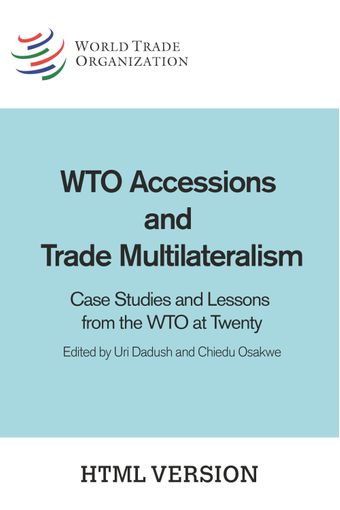Market access goods negotiations: Salience, results and meaning

- Authors: Jürgen Richtering, Eric Ng Shing, Mustapha Sekkate and Dayong Yu
- Source: WTO Accessions and Trade Multilateralism , pp 31-31
- Publication Date: enero 2015
- DOI: https://doi.org/10.30875/761a0870-en
- Idioma: Inglés
Trade negotiations and the exchange of concessions on trade in goods have been the cornerstone of the multilateral trading system. This chapter examines the salient features, results and meaning of the schedules of tariff concessions and commitments on goods of Article XII members: what they mean and what they have contributed. We find that the bilateral market access of Article XII members has shaped the landscape of tariff commitments that provide transparency and predictability to today’s merchandise trade relationships. We also found that the large number of post-2001 accessions coincided with an extended period of global growth, particularly among the major emerging economies, fostered by the stability of trade regimes. When we compared Article XII members with General Agreement on Tariffs and Trade (GATT) members on bound tariffs, we found that the comparable bound tariff rates were higher for GATT members, and that a number of original members retained unbound tariff lines for non-agricultural products. Overall, results from the concluded accessions have produced more liberal tariff concessions than those of original WTO members, expanding the market access for WTO members’ exports. The lower barriers to trade in these Article XII members’ markets have improved economic efficiency, increased competition and led to better resource reallocation.
-
From This Site
/content/books/9789287046796s013-c001dcterms_subject,pub_countryId-contentType:WorkingPaperSeries -contentType:Periodical -contentType:BookSeries -contentType:ReportSeries105


